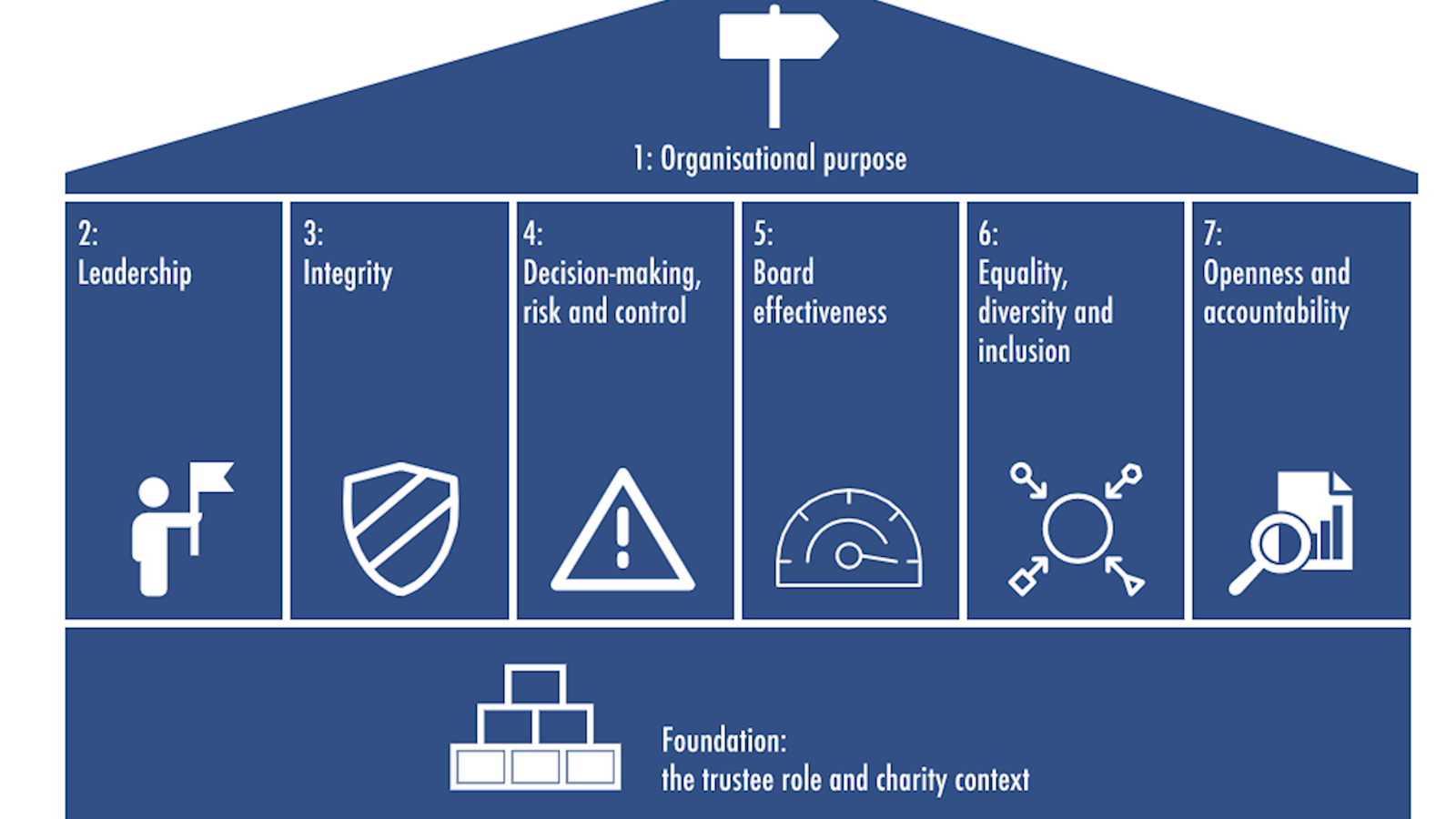This is the first article in a new series on the Charity Governance Code, showing how charities of all sizes can adopt and demonstrate effective governance processes. This article introduces the Code and its first principle on Organisational Purpose to help you achieve clarity about your charity’s aims.
The Charity Governance Code
Established by the sector, for the sector, the Charity Governance Code is a practical tool for trustees. Whilst the Code is not a legal requirement, it is an excellent tool for continuous improvement to help us achieve good governance and minimise our risk.
The Code comprises 7 key principles set over an underlying foundation of the trustee role and charity context.
The Foundation
The Foundation of the Code assumes that all trustees are committed to their charity’s cause and good governance and understand their role and legal obligations.
Unfortunately, time and again we see trustees falling short of understanding their basic duties in Charity Commission inquiries.
A recent example is Nanaksar Thath Isher Darbar Trust where trustees put the charity’s assets at risk by taking out loans secured against schools and converting land to a car park without planning permission. This inquiry found that the trustees failed to fully understand their responsibilities, in particular failing to document their decision-making process so that it could not be shown whether their decisions were in the best interest of the charity or not.
It is essential that any new trustee has a good understanding of their basic duties as outlined in the Charity Commission’s guide CC3 The Essential Trustee. A comprehensive induction process is key, and it is important that induction and regular trustee training are documented. Our Trustee Training Modules can make a great addition to your charity’s trustee induction process.
Principle 1: Organisational Purpose
“The board is clear about the charity’s aims and ensures that these are being delivered effectively and sustainably. “
The Code provides useful templates for small and large (defined as £1m+ income) charities to help us do this; trustees can use these templates to evaluate how well they meet each recommended practice and how they could improve. The Code’s steering committee recognises that some of the recommendations may be a stretch for small charities and as such the Code operates on a ‘comply or explain’ principle.
The templates contain three broad areas of recommended practice for this principle:
- Determining organisational purpose
- Achieving the purpose
- Analysing the external environment and planning for sustainability
Determining Organisational Purpose
An important piece of good practice is the development of a strategy or plan that aims to achieve the organisation’s charitable purposes and is clear about the desired outputs, outcomes, and impacts. It is important not only to have a clear mission but to have clear plans on implementation. Putting together a strategy can be a really useful exercise to get everyone on the same page and steer the future of the charity.
Best practice also includes periodically reviewing the organisation’s charitable purposes, and the external environment in which it works, to make sure that the charity, and its purposes, stay relevant and valid.
Achieving the Purpose
All trustees should be able to explain the charity’s public benefit and the board should evaluate the charity’s impact by measuring and assessing results, outputs and outcomes.
It is often said that what gets measured gets improved. Understanding the impact of our charity’s work is vital for us to assess our performance and make strategic plans for the future. In developing measures, it can be useful to link activity to the impact it makes. For example, “we mentored 113 long term unemployed people which successfully saw 89% of them entering permanent, meaningful employment”.
Our ICAEW Trustee Training Modules provide guidance on strategy development and a case study on measuring impact.
Analysing the external environment and planning for sustainability
We also need to consider what other services and charities are operating in our environment. Are we directly competing with other services? Could we work better together? Even if we do not feel it is right for us to merge or create a shared service centre at this time; it is still so valuable to have a dialogue with our peers and with other organisations in our environment such that we can learn from each other and be better prepared for future uncertainty.
About the author
Louisa Burton ACA is a member of the Volunteering Community's Advisory Group and provides accountancy services for charities and other organisations (https://www.louisaburton.co.uk/).
*The views expressed are the author’s and not ICAEW’s.

